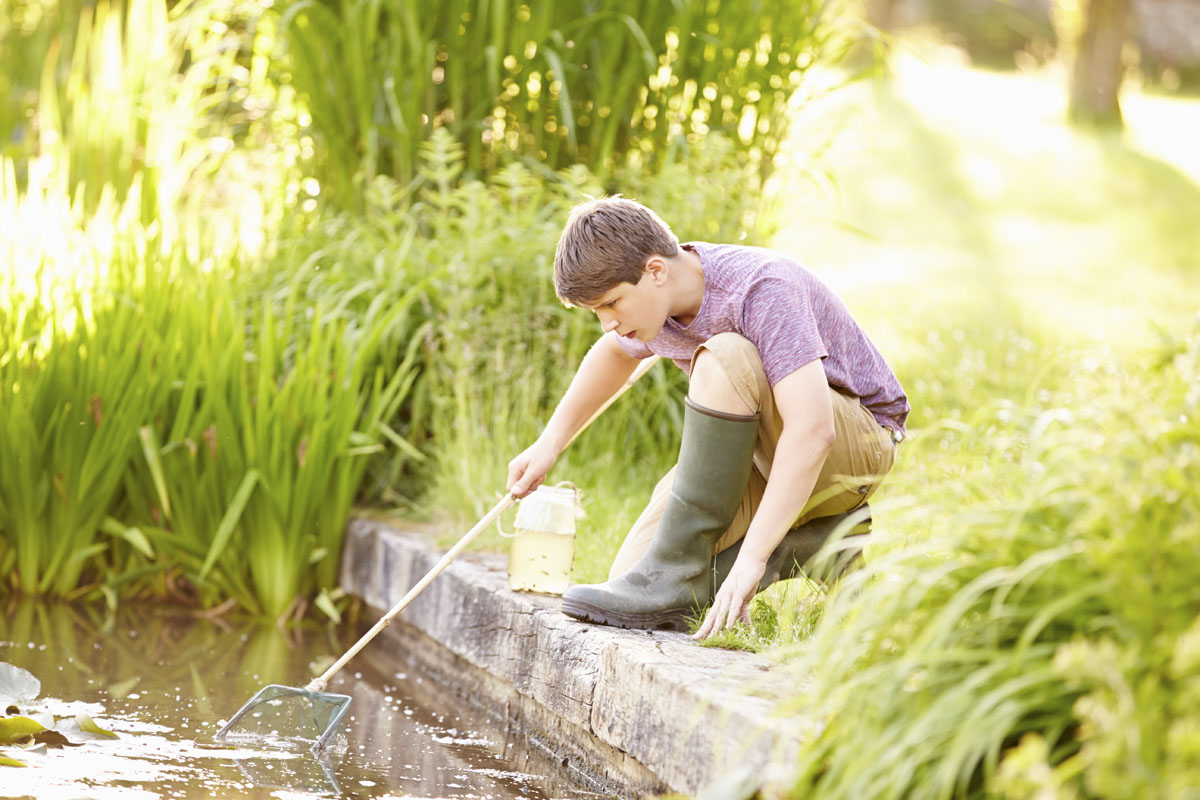
A backyard pond, especially one with aquatic plants and fish, such as koi or the less expensive but equally colorful goldfish, adds appeal to your landscape. The Wakin goldfish, a Chinese native, can reach 18 inches in length and, like koi, is a friendly fish, especially around feeding time. In a pond, the comet goldfish, a more common species, can grow to be 6 to 10 inches long. Some kinds can be left in the pond over the winter, while others must be taken inside. Goldfish can live for more than a decade if they are properly cared for. To maintain its inhabitants healthy, a goldfish pond requires regular maintenance.
Make sure you have a good filtration system in place. Filtration is required to remove part of the waste produced by the fish, as well as the decomposition of plant matter in the water. Every few weeks, clean the filters according to the manufacturer’s instructions. Goldfish are vulnerable to ammonia and nitrate buildup in pond water due to insufficient filtering. Every other day, check the water for nitrates. Nitrate levels in goldfish culture should ideally be nil. High waste product levels can also be produced by having too many goldfish in your pond — each goldfish should have about 3 to 4 square feet of water surface, assuming the fish are of average size – about 6 to 10 inches.
Use plants to cover around 75 percent of the pond’s surface to reduce algae production. This will block sunlight from reaching the water’s surface, encouraging algae development. Some algicides are poisonous to goldfish, therefore don’t use it in a pond with them. Water plants provide shade, which keeps the pond water from becoming too heated. The temperature of the pond water should be between 65 and 85 degrees Fahrenheit for goldfish to grow.
Skim the pond for leaves and debris on a regular basis. Algae have no feeding source if dead organic debris is removed every few days. Algae in a pond not only looks unappealing, but it also depletes oxygen levels in the water, which goldfish require to survive.
Feed your pond’s fish with goldfish food prepared exclusively for them, as directed on the package. Don’t overeat. Goldfish metabolism speeds up in the summer, when the pond water temperature is around 80 degrees Fahrenheit, and they can be fed twice a day safely. Food that isn’t consumed pollutes the pond.
Fertilize your pond plants according to the instructions for each species of plant. Water lilies (Nymphaea), for example, need fertilizer on a regular basis to thrive. Trim or divide any plant material that appears to be overgrown or unhealthy on a regular basis. Healthy plants give your pond’s goldfish areas to hide from predators like raccoons and blue herons, as well as to escape the sun’s heat.
During the hot, dry summer months, top off the pond’s water to repair evaporation losses. The goldfish will be stressed if there isn’t enough water, making them more prone to sickness. The water must be chlorinated before being added to the pond, or the fish may perish. Before adding water to the pond, dissolve dechlorinator tablets in buckets of water according to package guidelines.
Maintenance in the Winter
Check to see whether you have a goldfish that can stay outside in the winter. Some varieties demand warmer temperatures than those seen in most parts of the country during the winter. Comet goldfish, for example, require water temperatures of 68 to 75 degrees Fahrenheit, whereas wakin goldfish can stay in the pond as long as there is an air hole. Make a hole in the ice or use a pond heater to keep the pond open when the surface freezes over. A hole in the surface ice, in either case, permits gases to escape. In addition, winterize the pond by turning off the filtration system and relocating plants to the deepest part of the pond. Do not add food to the water at this time since goldfish that endure cold will hibernate at the bottom of the tank in a dormant state.
If your pond is going to freeze solid, bring your goldfish and plants indoors. If your goldfish needs to come indoors, provide them with a dechlorinated indoor habitat. Remove the plants, pot and all, from the water and bring them inside.
Throughout the winter, keep removing debris from the pond on a regular basis.